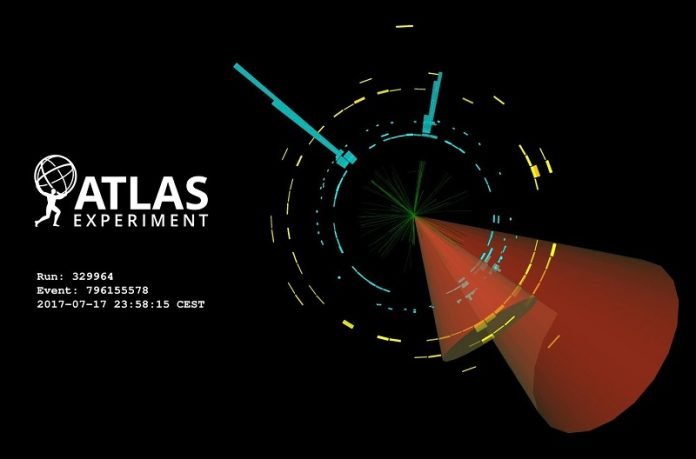
Remember how hard it was to find one Higgs boson? Imagine finding two at the same time and place.
This rare event, known as di-Higgs production, is crucial for understanding the Higgs boson’s self-interaction.
By studying this process, physicists can measure the strength of the Higgs boson’s “self-coupling,” a key part of the Standard Model that links the Higgs mechanism to the stability of our universe.
Searching for di-Higgs production is a tough job. It’s about 1,000 times rarer than finding a single Higgs boson.
During the entire Run 2 of the Large Hadron Collider (LHC), only a few thousand di-Higgs events were expected to be produced in ATLAS, compared to the 40 million collisions happening every second.
So, how do physicists find these rare events in such a vast amount of data? They look for di-Higgs production in multiple ways.
By examining different decay modes of di-Higgs events and combining them, they increase their chances of finding and studying these events.
Researchers at the ATLAS collaboration have now released the most sensitive search for di-Higgs production and self-coupling yet. They achieved this by combining five different studies of LHC Run 2 data.
This comprehensive search covers over half of all possible di-Higgs events in ATLAS. The study is also available on the arXiv preprint server.
Each of the five studies focused on different decay modes, each with its own advantages and challenges.
For example, the most common di-Higgs decay mode is into four bottom quarks. However, other processes in the Standard Model can also produce four bottom quarks, making it hard to distinguish a true di-Higgs event from the background noise.
Another decay mode is into two bottom quarks and two tau leptons. This mode has less background noise but is five times less common and involves neutrinos that escape undetected, complicating the reconstruction of the decay. The decay into multiple leptons is not too rare but has complex signatures.
Some decays are even rarer, like the decay into two bottom quarks and two photons, accounting for only 0.3% of total di-Higgs decays. However, this mode has a cleaner signature and much less background noise.
By combining the results from these various decay searches, researchers found that the probability of two Higgs bosons being produced excludes values more than 2.9 times the Standard Model prediction. This result is at a 95% confidence level, with an expected sensitivity of 2.4 (assuming this process doesn’t occur in nature).
The researchers also set constraints on the strength of the Higgs boson self-coupling, achieving the best sensitivity yet on this important measure. They found that the Higgs self-coupling constant and the interaction strength of two Higgs bosons and two vector bosons are consistent with Standard Model predictions.
This combined result marks a milestone in di-Higgs production studies. Now, ATLAS researchers are looking forward to data from the ongoing LHC Run 3 and the upcoming High-Luminosity LHC operation. With this new data, physicists hope to finally observe the elusive Higgs-boson-pair production.



